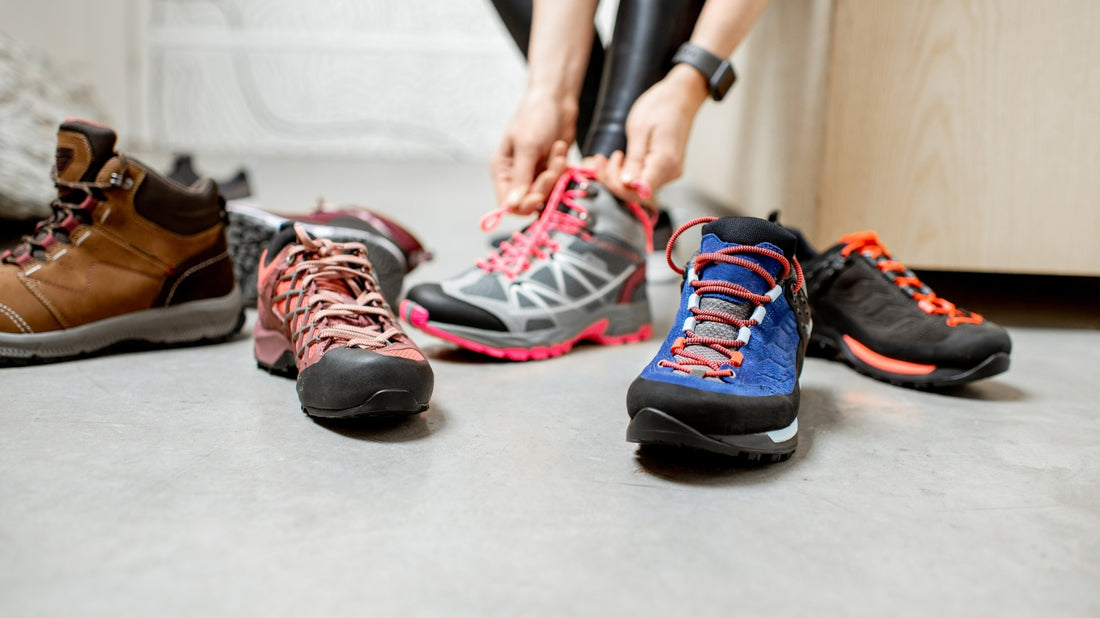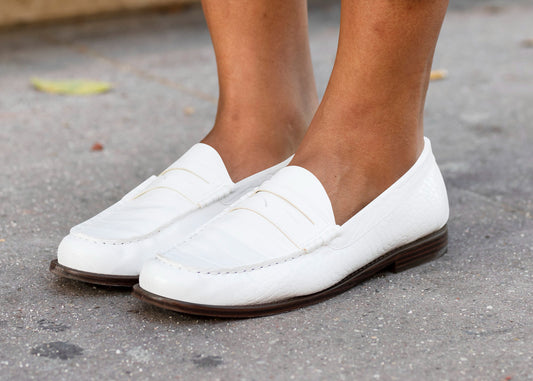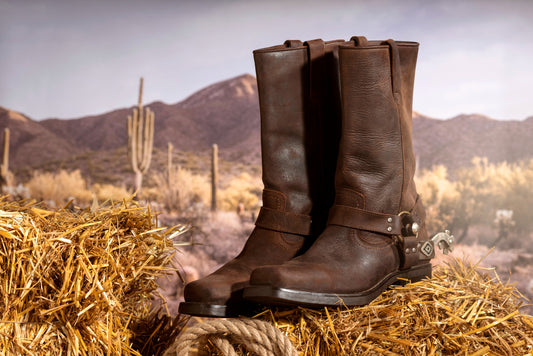How To Break In Hiking Shoes: Hiking Boot and Shoe Guide

Do you have boots that feel more like a medieval torture device than a piece of essential outdoor gear? Knowing how to break in your hiking boots and shoes is essential before you hit the trails. Don't just blind wear your hiking boots on a long trek.
Whether you have leather hiking boots or a lighter material, your new pair of hiking boots should feel like a second skin. Every hiker knows that a poor boots fit can lead to blisters and a miserable experience.
Get your boots ready while this guide walks you through the essential steps to ensure your next adventure is nothing but spectacular.
What Does Breaking In Hiking Shoes Mean?
Breaking in new hiking boots, especially leather boots, is a vital step to ensure they fit perfectly before you wear your boots outside for a hiking trip. This break-in process allows the footwear to mold to your feet, reducing the chances of friction and blisters.
Even having the best hiking boots won't spare you from discomfort if they haven't been properly broken in. It's about creating the perfect environment within your boots to fit snugly around every contour of your foot.
This process, when done correctly, transforms your new hiking boots from stiff and unyielding to comfortable and supportive accessories for your outdoor adventures.
Read related article: How to Choose Hiking Shoes and Hiking Boots: Shoe Buying Guide
Why Is It Important To Break In Your Shoes?
Breaking in your new pair of boots is crucial to avoid blisters and discomfort, especially when tackling long distances over different terrains. Even if you don't plan to scale mountains immediately, properly broken-in boots ensure that your feet remain comfortable and free from hot spots that can lead to painful blisters.
Through the process of breaking in boots, you allow the material, whether leather or a synthetic blend, to mold closely to the shape of your feet. This can be particularly noticeable in the insole and the upper part of the boots where slight pressure points can cause significant discomfort.
By gradually increasing mileage in your boots, you ensure they feel right and perform well under various conditions.
Not every hike requires the same support or cushioning, but having boots that are well-adapted to your feet’s unique contours can make all the difference in keeping your adventures enjoyable and pain-free.
Read related article: How to Clean Hiking Boots - A Step-by-Step Guide
5 Different Ways You Can Break In Hiking Boots
To help you beging breaking in your hiking boots, here are five different ways you can try to get the perfect fit for your feet.
Wear Your Hiking Boots Around the House
One way to break in your boots is to start wearing your new boots around the house. This method allows your feet to gradually get used to the boots in a controlled environment.
When doing this, make sure to wear the same socks you plan to wear on your hikes to simulate the conditions as closely as possible. This approach is particularly effective for both synthetic and leather boots, as it begins the molding process without exposing the boots to outdoor elements.
Wear the Right Socks
Choosing the right socks is crucial when beginning to break in your shoes as soon as you get them. Socks can dramatically affect how your boots fit and feel. For leather boots, which require a bit more time to break in, thicker socks can provide additional cushioning during the initial period.
For synthetic boots, which are generally easier to break in, a medium thickness sock might be perfect. The key is consistency; always test your boots with the socks you intend to use while hiking.
Tighten Your Laces Correctly
Proper lacing techniques can influence the break-in process significantly. Tighten your laces correctly to ensure your boots properly support your feet without cutting off circulation.
This becomes especially important for hiking shoes that need to fit snugly yet comfortably. By adjusting the tightness in different sections of the boot, you can help to alleviate potential pressure points, making the overall experience more pleasant.
Gradually Increase Distance and Terrain
Once you become somewhat comfortable in your boots around town, it's time to test them in conditions more similar to your hiking environment.
Start with short walks on even terrain and gradually increase both the distance and the difficulty of the terrain. This method allows the type of boots, be they synthetic or leather, to adjust to the various stresses and flexes they will experience on actual hikes.
Use Hiking Boot Stretchers
While it's tempting to take new boots straight onto the trail, investing time in using hiking boot stretchers can make a significant difference, especially for leather boots which require more time to break in.
These devices can gently stretch the material of the boot, reducing the initial discomfort you might experience. Remember, though, that this method should complement wearing your boots, not replace it.
How Long Does It Take to Break in Hiking Boots?

The duration needed to begin breaking in hiking boots can vary significantly.
Typically, it can take anywhere from one to four weeks to break in a new pair of boots sufficiently.
This break-in period largely depends on the material of the boots and the type of hiking or backpacking activities you plan to engage in. Since each pair of boots is different, with leather boots generally requiring a longer time to mold comfortably to your feet than synthetic materials, patience is key.
Gradually increasing the intensity and duration of your hikes during these weeks will make sure your boots are well-prepared for any adventure, ensuring optimal comfort and support on the trails.
Read related article: How to Waterproof Hiking Boots - 3 Effective Methods
Useful Tips to Extend Your Boot's Life
Get your water and stain repellent here!
While breaking in your hiking boots is essential, it's also vital to take good care of them so they can last for many adventures.
Here are a few tips to help extend the life of your hiking boots:
- Clean and dry your boots after each hike to prevent dirt and moisture from building up.
- Treat leather boots with conditioner periodically to maintain its suppleness and waterproofing.
- Store your boots in a cool, dry place away from direct sunlight to prevent the leather from cracking or drying out.
- Replace worn-out laces to ensure proper support and fit.
- Apply leather spray or water and stain repellent spray for extra protection against the elements.
- Invest in quality shoe cleaning and maintenance products to keep your boots in top condition.
You might want to check out Stone and Clark's Leather Shoe Shining Kit for a complete set of leather shoe care essentials.
Closing Thoughts
Before committing to a new pair of hiking boots, understanding the importance of choosing the right hiking boots cannot be overstated. Not only does it ensure your comfort and safety on the trail, but it also dictates the duration and ease with which you can break in your new footwear.
Breaking in boots can help prevent blisters and discomfort, ensuring that your investment in a different pair of boots pays off by remaining durable and comfortable for many adventures.
Remember, taking the time to properly break in and care for your boots will keep them in prime condition, ready to tackle countless miles of diverse terrain alongside you.
Read related article: How To Clean Gore Tex Shoes - Gore-Tex Footwear Cleaning Guide






